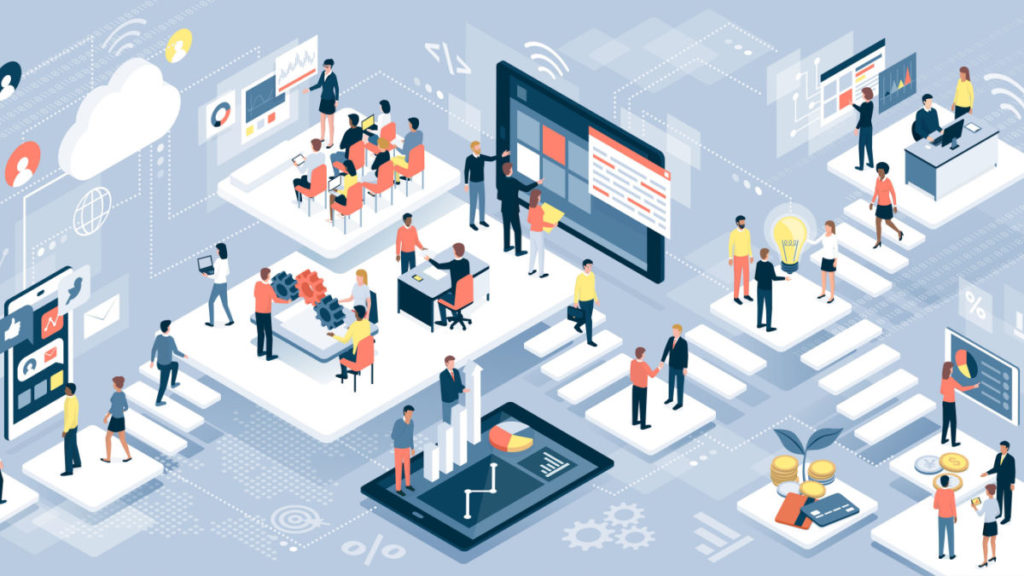
As new technologies become mainstream, companies often expect their CIOs to understand and incorporate them into the business. For this reason, it is crucial for CIOs to have a deep understanding of company operations and be able to identify the potential benefits of a new technology. Additionally, the CIO plays a critical role in helping non-IT leaders within the company understand how the technology relates to their specific business area. Otherwise, non-IT leaders might not see the technology’s potential and may not provide necessary IT project support.
One such technology is hyperautomation, sometimes referred to as smart automation. Hyperautomation is a process of automating business processes, tasks, and activities with the use of technologies such as artificial intelligence (AI), machine learning (ML), and robotic process automation (RPA). It is quickly becoming the go-to solution for companies looking to streamline operations and improve efficiency. But its impact isn’t limited to just IT — hyperautomation can have far-reaching implications on every aspect of your business, including customer interactions. Let’s take a closer look.
Boost Efficiency, Add Workforce Value
Hyperautomation significantly impacts efficiency. By automating repetitive and manual tasks, organizations can free up their employees to focus on more strategic, value-adding activities. For example, automation can be used to process invoices, update customer records, or monitor supply chain activities, allowing employees to focus on more important tasks such as customer service or product development. Instead of monotonous data entry, or cutting and pasting between a web browser and Excel or an ERP system, a worker can use robotic process automation (RPA) to do that work much more quickly and focus on higher value-activities.
This increased efficiency can lead to improved productivity, which can in turn drive growth and profitability. Furthermore, once the benefits of hyperautomation are experienced by one area of the business, other departments will want similar improvements. This can result in a viral spread of automation that can have a strong impact across the enterprise.
The addition of AI means that the automation can make decisions and learn while being directed by the worker. Some workers have expressed concern that automation may lead to some job losses as some repetitive or monotonous tasks will no longer be needed for human workers. However, I have not seen this in companies I have been involved with. It has been much more common to see workers empowered to accomplish more through the help of automation. This has resulted in higher satisfaction levels from those workers who experienced higher efficiency and decreased monotony. For example, employees at Toyota have been able to spend more time on visual inspections and improving the quality of their products by automating mundane operations.
Reduce Costs
Hyperautomation can also help to reduce costs. Automating processes can save organizations money on labor, as well as improve accuracy and reduce errors. Automation can also help organizations to optimize their use of resources, such as materials and energy, which can further reduce costs. These cost savings can be used to invest in other areas of the business, such as research and development, marketing, or employee development. When we automated Accounts Payable (AP) in my company, it made it possible to grow our business without adding additional AP workers. The money that would have been needed to hire additional staff to handle incoming invoices was available to grow other departments.
Improve Customer Experience
Another way that hyperautomation can benefit companies is by improving the customer experience. Automation can be used to improve the speed and accuracy of customer service, as well as provide customers with more relevant and personalized interactions. This can lead to increased customer satisfaction, which in turn can lead to increased sales and loyalty. At my company, the customer service staff provide a valuable service to our customers by providing a personal level of attention when problems arise or when they have a special request.
By automating the more redundant parts of their job, such as order entry, they focus more directly on the customers’ needs. Additionally, automation can help organizations to better manage and analyze customer data, which can be used to identify new opportunities and improve marketing efforts.
Risk Management
Hyperautomation can also help organizations manage risk more effectively. Automation can be used to monitor for potential threats and to identify and respond to risks more quickly. For example, automation can be used to monitor financial transactions for suspicious activity, to detect and respond to cyber threats, or to monitor supply chain activities for potential disruptions. By automating these processes, organizations can improve their ability to mitigate risk and protect their assets.
Summary
As CIO of a mid-market manufacturing company, I don’t have the luxury of focusing solely on the benefits a new technology brings to the IT department. I must look for ways that technology can advance our business initiatives and improve our processes. The best way to accomplish that is through collaboration with non-IT leaders in the company who are able to see the benefits of new technologies and will help. Hyperautomation goes beyond the IT department; it can impact the entire organization by helping it to improve efficiency, reduce costs, and gain a competitive edge. It also can help organizations to improve customer experience, manage the workforce, and stay on top of risks more effectively. Given today’s rapid pace of technological change, organizations that invest in hyperautomation are well-positioned to reap the benefits of this powerful technology and stay ahead of the curve in the years to come.
Which companies are the most important vendors in AI and Hyperautomation? Click here to see the Acceleration Economy Top 10 AI/Hyperautomation Short List, as selected by our expert team of practitioner-analysts
Want more tech insights for the top execs? Visit the Leadership channel:











